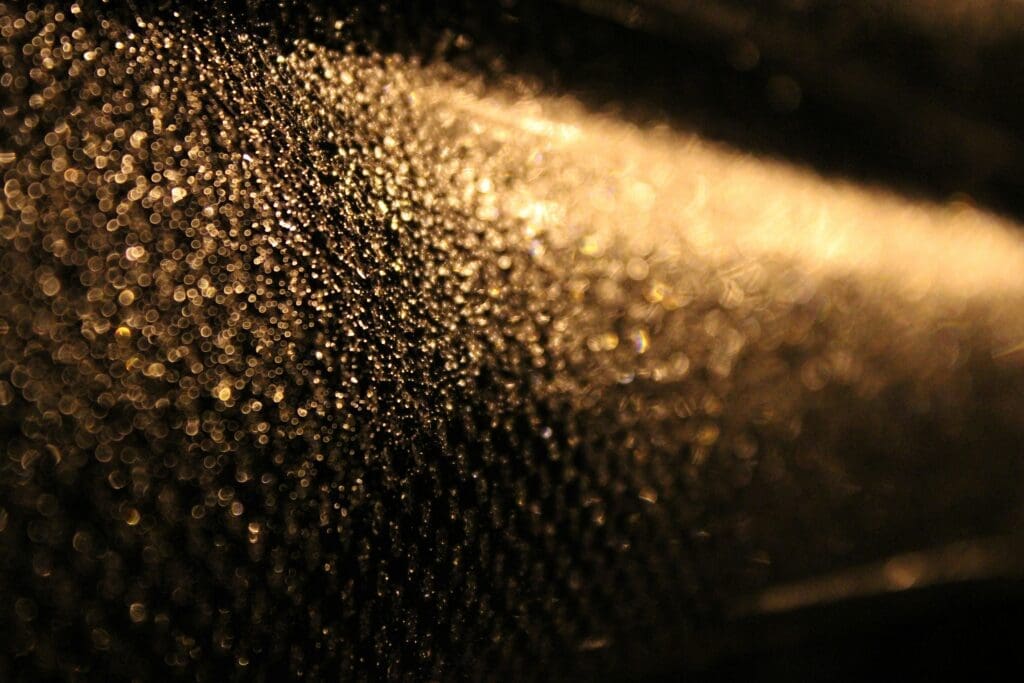We talk a lot about waterproofness in outdoor gear, and for good reason. But breathability? That’s where things often get complicated. In reality, breathability is one of the most misunderstood and inconsistently measured performance features in the textile world.
We evaluated the same membrane using six widely accepted breathability standards.
The results? Sometimes aligned, sometimes wildly different. Depending on the method, the same membrane scored anywhere from under 1,000 to over 17,000 g/m²/24h.
This shows how temperature, humidity, airflow, and test setup can all skew results.
The relationship between waterproofness and breathability.
Waterproofness and breathability are two sides of the same coin, and balancing them is the key to comfort in outdoor gear.
The more waterproof a membrane is, the harder it can be for moisture to escape, unless the membrane technology is designed to do both effectively.
The challenge: keeping both in check
- DWR: When DWR wears off your jacket, the outer fabric absorbs water instead of repelling it. This reduces breathability because moisture inside the jacket has nowhere to go.
- Fabric layering: Some laminates and coatings improve waterproofness but block breathability, trapping sweat inside.
- Membrane type: Microporous membranes (like ours) let sweat escape through tiny pores while blocking rain. Monolithic membranes move moisture molecule by molecule, which can be slower.

How breathability is measured
There’s no single way to measure breathability. Different brands and labs use different standards, which can make comparisons tricky.
The two most common types of measuring standards are:
1. MVTR (Moisture Vapor Transmission Rate)
What it measures: How much water vapor (in grams) passes through 1 square meter of fabric in 24 hours.
Common tests for microporous membranes (like dimpora® membranes):
- JIS L 1099 A1 → Absorbs the humidity towards the inside, where a desiccant is located, measuring the weight gain.
- ASTM E96 B → Evaporates the water toward the outside (like in real life), measuring the weight loss.
Both measure water vapor passing through fabric but under very different conditions.
JIS L 1099 A1: Uses a hot and humid environment and typically gives higher values. Not really close to reality.
ASTM E96 B: Uses cooler, drier conditions and is closer to the reality of you wearing a jacket outside considering your 35/36ºC body temperature. More conservative, reproducible results.
In Our Testing
The same membrane showed 10,200 g/m²/24h with JIS L 1099 A1, but only 900 g/m²/24h with ASTM E96 B.
- The numbers aren’t interchangeable, so make sure you’re comparing the same test method across products.

2. RET (Resistance to Evaporate Heat Loss)
What it measures: How much the fabric resists moisture vapor escaping. The lower the result, the better the breathability.
The RET test was originally developed for a different type of membrane: monolithic, hydrophilic ones that absorb moisture and pass it through. These membranes do well in RET because the test assumes the fabric, often treated to absorb water more easily, is in contact with water and placed close to a heat source so moisture gets pushed through the fabric more quickly.
But dimpora membranes work differently. They’re microporous and water-repellent (hydrophobic). Instead of absorbing moisture, they let sweat vapor pass through tiny pores, just like what happens when you’re wearing a jacket outside.
Since RET is based on how well a fabric handles liquid moisture, it doesn’t reflect how our membranes perform in real life. That’s why RET often gives lower scores for microporous membranes like ours, even if they’re working exactly as they should.
Why ASTM E96 B is a good fit for dimpora membranes
While JIS L 1099 A1 is more popular in the outdoor industry (often producing higher numbers), we rely more on ASTM E96 B, and here’s why:
1. More reproducible results: In our testing, ASTM E96 B had just a 7% variation across 154 measurements. That’s science we can trust.
2. Real-life relevance: It uses moderate temperatures and humidity, mimicking typical outdoor conditions.
3. Good for microporous membranes: The upright setup suits our hydrophobic technology and how it functions in action.
4. No inflated numbers: It gives a conservative but honest view of breathability. One that reflects reality, not just lab extremes.
Take aways
For Professionals:
- Know which standard suits your membrane type.
- Test supported laminated fabrics for real-world accuracy.
- Don’t just chase numbers; build for real-life performance and sustainability.
Breathability is more complex than a single score on a hangtag. The numbers can be helpful, but only when you know how they’re measured and what they actually represent. That’s why we test widely, share openly, and design membranes that perform where it matters most: in motion, out there, in the real world.



